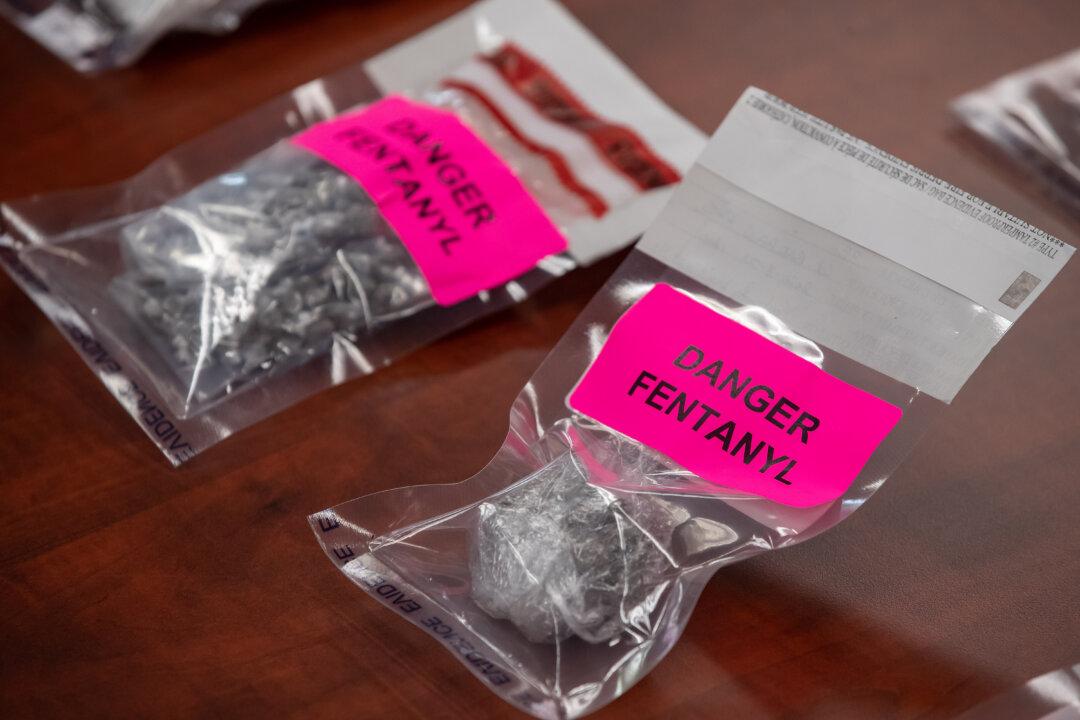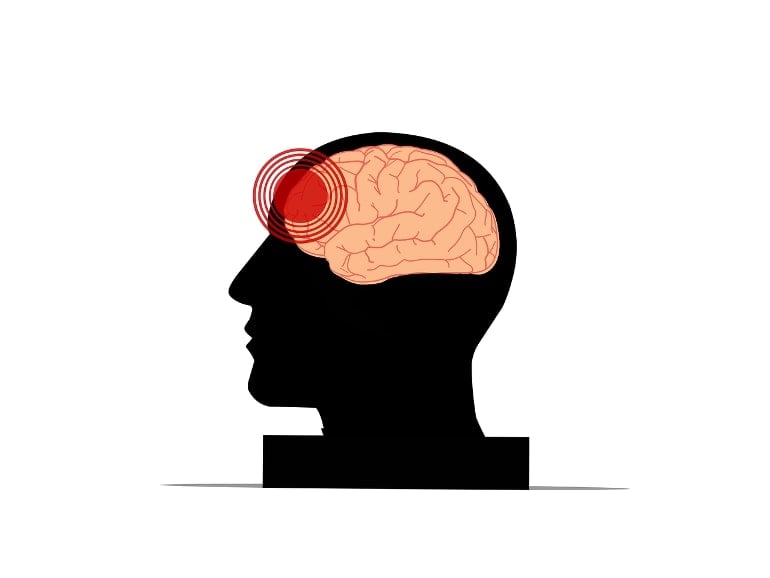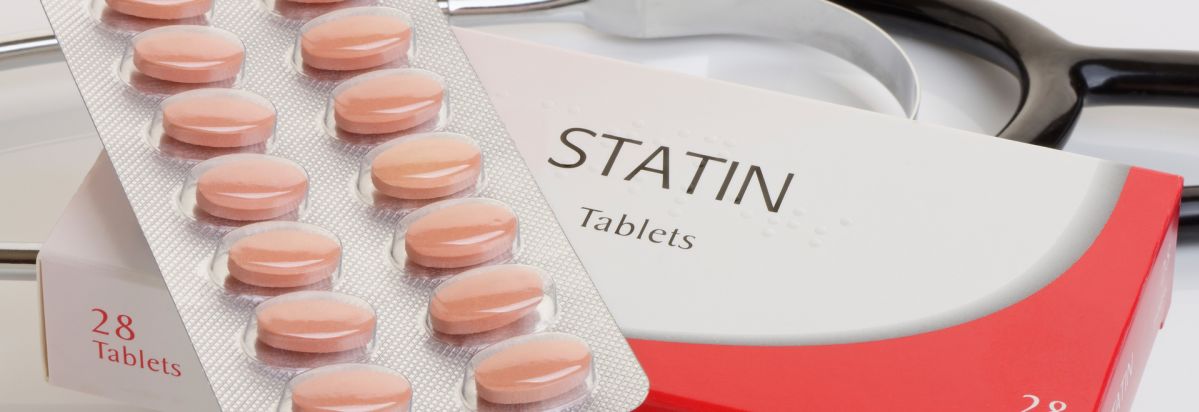Four years ago, Chelsea fell head first onto the hardwood floor at her college. She had a seizure and stopped breathing, causing an anoxic injury – when the brain is damaged from not receiving enough oxygen.

Before the accident, Chelsea experienced a level of anger similar to any other person. She had certainly never been aggressive. But ever since, she has grappled with mood swings and can’t contain her rage or impulses.
“I have really bad anger problems now. I can be fine one second and when the slightest inconvenience happens I’d be throwing and breaking things,” said Chelsea, a pseudonym we are using to protect her identity.
“One time was that I was really pissed off about not being able to go back to school. I really wanted to go and try and get my old life back… I was screaming, throwing things. My mum was yelling and I start getting physical with her, and then my dad stepped in and out of nowhere I punched him in the face.”
Chelsea’s story is not unique. Behaviour changes after brain injuries have been well documented for many years.
There are cases of people recovering from a brain damage with a new talent, or even in some cases, an accent from a foreign country, like this woman who survived a stroke only to acquire a Chinese accent.
Sometimes, brain damage can create a criminal.
On 1 August 1966, Charles Whitman infamously became the “Texas Tower Sniper”. He killed his mother and wife with knives, then climbed up the tower at the University of Texas and started randomly shooting at people for 96 minutes.
He killed 14 and injured 31 others, before he was gunned down.
During his autopsy, doctors found a tumour on his brain. It is indeterminable whether the tumour caused Whitman to act the way he did, but the autopsy report concluded it was certainly a possibility.
Injuries can be linked to areas of the brain that control morals
Whitman’s story, and others like it, intrigued Ryan Darby, a professor of neurology at Vanderbilt University in Nashville, Tennessee.
“Cases like this raise a question,” he told Business Insider. “What is it about brain lesions in different areas that could lead to this behaviour?”
In a recent study, Darby and his team looked at 17 cases where people appeared to behave normally, then started committing crimes after changes to their brain like a tumour or an injury.
They wanted to see if lesions in certain areas of the brain were associated with criminal behaviour, but the results were inconsistent.
However, when they looked at whether lesions were connected to the same area of the brain, they started to see a pattern.
“Even though all the brain lesions were in different parts of the brain, they were all connected to the same brain network,” Darby said. “Our idea is that after an injury in one location, other parts of the brain become dysfunctional.”
Areas they saw the lesions in were the anterior temporal lobe, the ventromedial frontal cortex, the amygdala, and the nucleus accumbens. These are all areas connected to morals, value decision making, reward and punishment.
“Those were the processes we thought would be important for what keeps a normal person from committing crimes,” Darby said.
There are studies linking brain damage to crime
Brain injuries typically result in having problems with “executive skills,” explained Huw Williams, a professor of clinical neuropsychology and co-director of the Centre for Clinical Neuropsychology Research at Exeter University in Britain.
These skills include planning ahead, thinking things through, managing impulses, and memory.
When you’re dealing with such a complicated organ like the brain, it takes decades of research to pinpoint what exactly might be happening.
There still isn’t strong research to suggest you can completely determine the way someone will behave depending on what their brain scans look like.
What is certain is that in a community sample of the UK population, analysed by Williams, about 10 percent will have had some kind of brain injury at some point.
In the prison population, this number jumps dramatically to somewhere between 50 and 70 percent. This trend is echoed in the US and South Africa
“This doesn’t mean necessarily that head injury equals crime,” Williams pointed out. “It might, but also it might be coincidental, because if you’ve got a violent life, and you crash cars, you’re likely to get a head injury at some point.”
A team at Oxford University tried to shed some light on this question in a 35-year population study in Sweden led by Psychiatrist Seena Fazel.
Results showed that overall, Swedes had a 2.5 percent chance of becoming violent offenders. If they had a head injury on their records, that rose to 9 percent.
To make allowances for the fact brain injuries could be a result of upbringing, the researchers also looked at the siblings of those with brain damage – they had a 4.5 percent chance of becoming offenders too.
In other words, the Oxford research shows that people have nearly double the chance of becoming violent offenders if they something in their upbringing, genetics, or environment predisposes it. Add a head injury on top of that, then the risk is doubled again.
Criminals might not be getting the right rehabilitation
Brain injuries are not easy to recover from. If memory is damaged, for example, patients will easily forget everything they have learned about how to behave. Or they might struggle to contain their outbursts of anger, like Chelsea does.
This is more pronounced among criminals, Williams said, partly because they are not getting the right rehabilitation.
When he switched to academia from clinical work, he was asked to supervise a student’s work looking into whether prisoners had post-traumatic stress disorder.
“I gave a workshop in a local prison, to get an idea of the nature of the environment… and one of the prisoners had an area of skull missing,” Williams said.
“This was probably because he’d had a head injury and hadn’t had follow up surgery to put in a titanium plate to replace the missing part of his skull probably removed to release pressure on the brain.
“He asked me why he had these funny feelings in his body that were quite nice, when he pressed himself on that area – and it was because he was pressing on the sensory motor strip. He was told he needed more surgery, and to take care with the area.”
After that, Williams became aware that the medical and neurological needs of the prison population probably weren’t being met.
“A lot of people who are in the system seem to have head injuries,” he said.
“That complicates their rehabilitation, which means there is a lot of re-offending. That may be because the present system isn’t necessarily well geared towards rehabilitation yet, especially neuro-rehabilitation where you have to remind people when to do things, and how to do them.”
Williams and his team started projects where they helped prison staff work with young people with brain injuries. So far the outcomes have been very promising because young people are more able to participate in their own improvement.
For example, for those with injuries to the left side of the brain, who have trouble remembering what they have been told, were given visual cues instead. “It’s about trying to find a way of helping and working with the population more effectively,” Williams said.
Neurology can be used in someone’s defence
When the law comes into it, things get even more complicated. Defence attorneys have a duty to defend their clients with rigour, and so they keep up with the latest research to help minimise their punishment.
In some cases, this means zealously claiming their client was neurologically predisposed to acting the way they did. It isn’t their fault, they may claim, because their brains are just wired that way.
Judith Edersheim is the co-founder and co-director of the Massachusetts General Hospital Centre for Law, Brain and Behaviour. It’s an organisation that is helping bring science into the courtroom, by separating the fringe ideas from the theories that are a lot more established.
“It’s very hard to tell [the difference] when neuroscience itself is so new,” Edersheim told Business Insider. “And there are some features of brain science that make it perhaps more alluring and look more probative than it should be.”
It’s important to make the distinction because law and science behave in conflicting ways. Science is evolutionary like “building blocks”, where you make assumptions and test them, then talk about the limitations of your studies and invite other scientists to do the same.
Law is not like that. In a courtroom, the outcome is final, and somebody’s life is going to change. So you have to be pretty certain of your evidence.
But when applied sparingly, looking carefully at the condition of an individual rather a collective, neuroscientific evidence can be a useful defence tool.
If a person is accused of a violent crime, there may be attributes of that person’s brain which would explain abhorrent violent behaviour, like a tumour in the brain’s frontal lobe. That would be a well-founded reason that somebody’s neurology could contribute to their defence.
One of the most successful defences along these lines was a case of an obstetrician in New York, Allan Zarkin, who started behaving peculiarly at work. He became unusually angry, and was short and provocative with the nursing staff.
Zarkin performed a cesarean section on a patient, delivering a healthy baby. He then carved his initials “AZ” into her abdomen. When asked about it, he simply said he thought he should sign it because he did such a good job.
After an investigation, doctors discovered that Zarkin had progressive Pick’s disease, a frontal lobe dementia similar to Alzheimer’s, which catastrophically disrupted his ability to plan, contain himself, and behave socially appropriately.
Zarkin wasn’t convicted, due to the medical diagnosis, but his licence was revoked.
In another case, a 40-year-old man who began looking at child pornography and propositioning prostitutes at massage parlours – behaviour that was completely out of character.
He was eventually kicked out by his wife and found guilty of child molestation.
But while awaiting jail, he complained of a terrible headache and was admitted to hospital. That’s when a large, egg-sized tumour was detected in the right lobe of the orbitofrontal cortex in his brain. Surgeons immediately removed it, and after that the pedophilic urges disappeared.
He successfully completed a Sexaholics Anonymous programme and was allowed to return home.
But it’s not possible to defend everyone
These two cases are extreme, and the cause and effect are easily identifiable. But when brain damage is less severe, it is difficult to draw definitive conclusions about how it can impact behaviour.
This becomes even more complicated when you look group data.
Research may show certain brain patterns or injuries that are loosely associated with certain types of behaviour, but then the lawyer has to correlate that with the defendant’s characteristics.
For example, you may have a whole set of brain scans of people who have committed violent crimes, and a pattern has been detected by researchers. You then have to show where the defendant fits into that group data.
“Crime is about behaviour, and the trial is about the mental state of the person who is sitting in front of you,” Edersheim explained.
“If you say someone has a propensity for violence, someone who has killed his wife for example, why is your propensity for violence only towards your wife? The individuated questions will dominate.”
Without the specifics, the behaviour is explained by motive. For now, at least, there are too many vulnerabilities in the neurological evidence for it to be used effectively.
Neuroscience’s contribution to criminal behaviour is still in its infancy, Edersheim said. Researchers are building on what they have to try and map out what makes a criminal mind, but there is still a lot they do not know.
Only when the science is a lot more concrete can it be used with confidence as a defence.
Researchers are still piecing the puzzle together
With Chelsea, she doesn’t know the next time she will lose control. Last time the police were called but no charges were brought against her.
If she ever commits a violent crime, though, it looks unlikely that the evidence of her post-injury behavioural changes will be strong enough to help her.
A neurologist and psychiatrist have both said her behaviour is a result of her brain damage, but she isn’t convinced of any of the treatment they offer her.
“When I get angry like that I literally have no control. It’s almost like the fight or flight response turns on and I choose to fight for no reason. It’s not even like I enjoy attacking people or getting worked up like that… it just happens,” she said.
“They put me on mood medication, but I don’t see the point in taking it. I see it as my brain is physically damaged, not chemically imbalanced. Then again, I could just misunderstand all of this.”
Of course, not everyone with a brain injury will become a criminal. As Darby explained, brain lesions may predispose someone to criminal behaviour, but that certainly doesn’t mean everyone becomes an offender.
As for those who suddenly acquire a propensity for violence from less serious injuries, like Chelsea, they are still awaiting answers.








